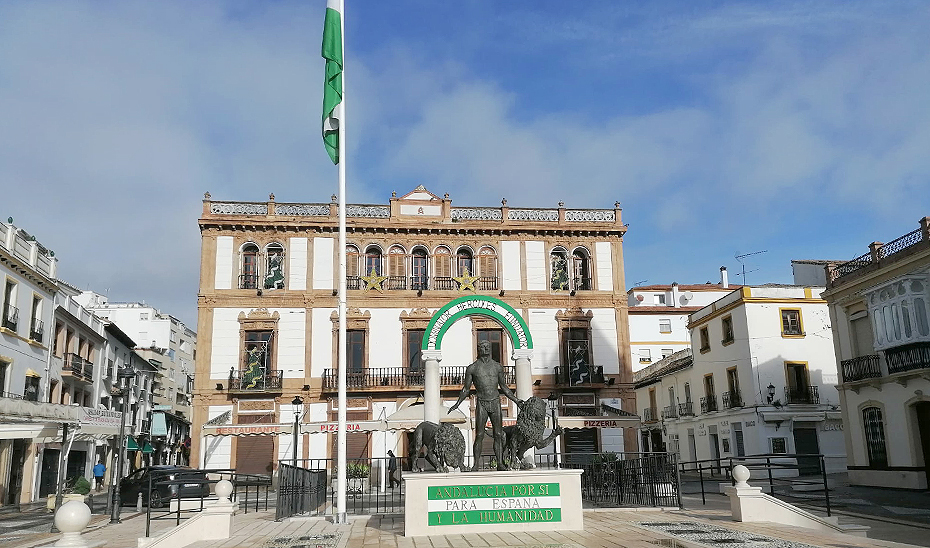Paul Whitelock has already recommended his Top 10 places to visit in the Serranía de Ronda. Now he selects his Top 10 places in Ronda, the town which has been his home for a decade.
Ronda is such a beautiful and exciting place that it’s hard to narrow it down to just 10 favourite places, so I’m going to cheat a bit and offer 11, in alphabetical order.
Baños Arabes – Carefully restored over the last few years, and again after the 2018 floods, the Arab Baths in Ronda are now amongst the best examples in Spain. For an insight into Ronda’s past and an interesting video explanation in Spanish and English, this is well worth a visit.
Barrio San Francisco – This part of town was my first home in Ronda. Located just outside the city walls to the south of the City of Dreams, the barrio is like a village in its own right. On the edge of the countryside with lovely people and with a wide choice of small shops, bars and restaurants, this is Ronda at its best. Try Café-Bar La Bodega or Cervecería El Bandolero for tapas and Restaurante Almocábar for one of the best meals in town.
Ocho Caños – “The Eight Spouts” are at the centre of a pretty area encompassing the Church of Nuestro Padre de Jesús and the Arab bridge. This was where the 1984 film of Bizet’s opera Carmen, starring a young Plácido Domingo, was shot. The local bar has photos of the filming on its walls.
Parador de Turismo – A fine example of a modern parador hotel, built on the site of the old town hall. You are welcome to enter and enjoy its roomy public spaces and opulent furnishings. The walk around the outside, the Paseo de Hemingway, named after the American writer, one of Ronda’s most famous visitors, offers stunning views down to the valley and towards the distant mountains.
Plaza de Toros – Claimed to be the oldest in Spain, this is where local torero Pedro Romero (1754-1839) got down off his horse and fought the bull on foot, thus starting the modern tradition of bullfighting. Whether you love or hate los toros, a tour is definitely worth it.
Palacio de Mondragón – a stunning restored Moorish palace that also houses the town museum. The different patios and gardens and the sound of trickling water are a delight. A super spot for a celebration. I enjoyed attending a wedding there in 2006.
Paseo de Blas Infante – these pretty gardens on the edge of Ronda’s cliff offer stunning views. Named after the “Father of Andalucía” for his championing of the Andalucían cause, he was shot dead in 1936 by Franco’s troops during the Spanish Civil War.
Plaza de Socorro – this is the main meeting point in the centre of town, with cafés, restaurants and shops all around a fountain with statues of Daniel and the Lions. Adjacent to the pedestrian shopping street and above an underground car park, it’s a good place to go and is somewhere with plenty of atmosphere. Check out the evening paseo, but beware of the tourist traps.

El monumento al escudo de Andalucía y la bandera, frente al Círculo de Artistas de Ronda, donde se celebró la Asamblea de 1918.
Plaza Duquesa del Parcent – this is, without doubt, the most beautiful and tranquil square in Ronda. With running water and plenty of shade, sit and relax and enjoy the buildings, including the Town Hall and the Iglesia de Santa María la Mayor, an interesting Arabic/Christian fusion.
Puente Nuevo – the New Bridge, completed in 1793, is the emblem of Ronda. Nearly 100 metres high it joins the more modern part of Ronda (El Mercadillo) to the Old Part (La Ciudad). Enjoy the views from either side of the bridge and marvel at the engineering skills that built it.
Ruta Ermita Virgen de la Cabeza – this rural walk, through olive groves along the far side of the Tajo towards the Arabic hermitage at the end of a two-kilometre track, affords the best views of Ronda sitting atop its cliff. Don’t forget your camera.
